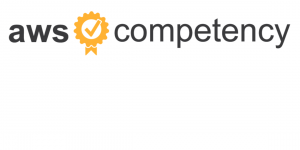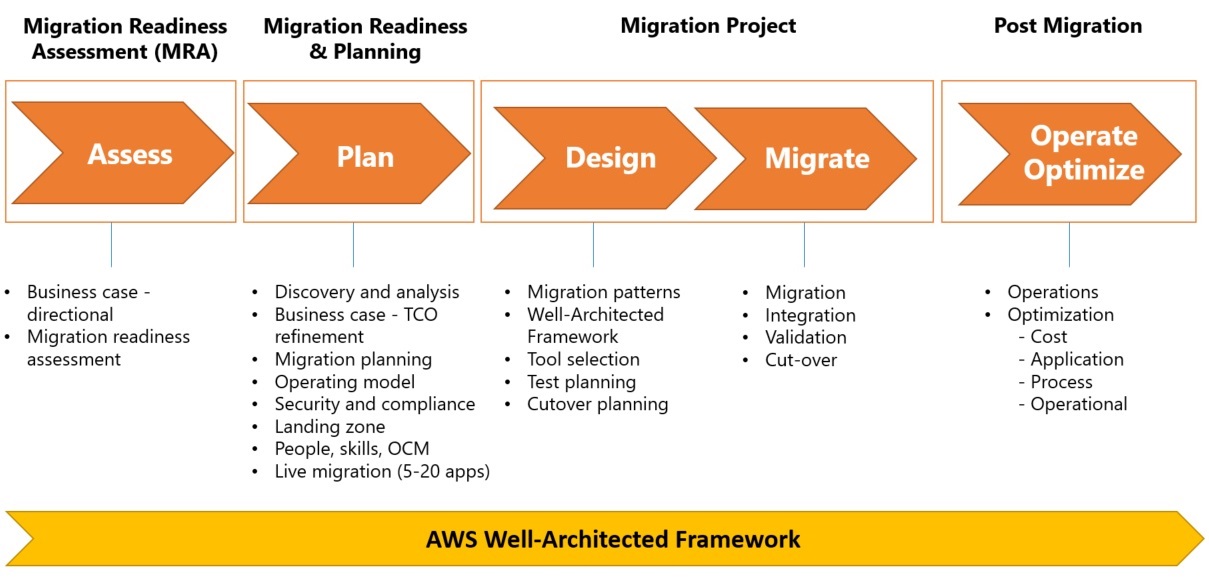AWS Partner Network (APN) Blog
Tips for Becoming an AWS Migration Consulting and Delivery Competency Partner
By Jim Huang, Partner Solutions Architect at AWS
 All across the world, AWS Partner Network (APN) Partners are helping customers realize their digital transformation by migrating datacenter infrastructure and applications to Amazon Web Services (AWS).
All across the world, AWS Partner Network (APN) Partners are helping customers realize their digital transformation by migrating datacenter infrastructure and applications to Amazon Web Services (AWS).
To highlight our APN Partners that have demonstrated technical proficiency and proven customer success in the migration area, we established the AWS Migration Competency for APN Consulting, Delivery, and Technology Partners.
In this post, I will walk you through the key elements of the AWS Migration Competency Validation Checklist for APN Consulting and Delivery Partners, and explain the principles and rationales behind the requirements. I will also share insights from my work as a Partner Solutions Architect in the AWS Competency validation process.
About the AWS Migration Consulting and Delivery Competency
Attaining the AWS Migration Competency allows APN Partners to differentiate themselves to customers by showcasing their migration expertise. AWS Competency Partners have additional opportunities to engage with AWS marketing, PR, business, and technical teams, and to participate in AWS migration programs with dedicated funding support.
APN Consulting Partners provide customers with expertise and training to enhance their cloud capabilities in migration planning, DevOps, and application modernization.
APN Delivery Partners accelerate customers’ cloud migration by providing technical support, personnel, and professional services. Delivery Partners take additional responsibilities for customers’ migration implementation and project ownership.
There are also APN Technology Partners that develop tools for customer’s migration tasks, but this post is focused on APN Consulting and Delivery Partners.
Validation Checklist
The Validation Checklist provides guidelines and criteria for your preparation and certification as an AWS Migration Consulting or Delivery Competency Partner. The requirements are mostly the same for Migration Consulting and Delivery Partners with a few differences on member certification, DevOps, and responsibilities for Delivery Partners’ professional services and project ownership.
View the AWS Migration Competency Consulting and Delivery Validation Checklist >>
The checklist is comprised of two segments: prerequisites and technical validation criteria.
Prerequisites include:
- APN Advanced Tier (or higher) status and existing employee AWS Certifications
- Customer case studies and workloads migrated
- Dedicated migration practice or solution landing page showcasing your AWS partnership
- Partner self-assessment of AWS Migration Competency readiness
Technical validation criteria segment consists of three areas:
- Overview of APN Partner’s migration practices, including end-of-project customer satisfaction survey results
- Exercise of the AWS Well-Architected Framework with a set of minimum requirements in each of the 5 Pillars of the Well-Architected Framework
- Demonstration of the Migration Methodology, and processes applied consistently across projects
Demonstrating Migration Experience
A key aspect that demonstrates an APN Partner’s technical proficiency and proven customer success is their migration experience. The validation checklist defines such experience by two factors: migration complexity and the amount of workloads migrated.
Migration complexity
Migration complexity is determined by the strategy or pattern an APN Partner uses to migrate an application, and the effort taken to migrate that application.
There are six common migration strategies: rehost, replatform, repurchase, refactor, retain, and retire. Each strategy has its complexity weighted. For example, since rehost takes a lift-and-shift approach to move applications to the AWS Cloud with minimal change and effort, the application migration complexity is low.
On the other end of the spectrum is refactor, which requires application change or modernization towards cloud-native services. Hence, migration complexity with refactoring is high.
Figure 1 shows the migration strategies and their corresponding complexity. The figure does not include retain and retire, since they are not part of the migration process.

Figure 1 – Migration strategy and complexity.
The weighted complexity reflects an APN Partner’s migration capabilities. The higher the complexity, the stronger the required skills and experience gained, and the higher the degree of competency.
Workloads migrated
Workloads refer to applications and source servers (physical servers or virtual machines). The AWS Migration Competency determines the amount of workloads migrated to AWS by complexity-weighted number of applications and servers, which is expressed conceptually as follows:
- Complexity-weighted number of applications
= (number of migrated applications) x (migration complexity per application) - Complexity-weighted number of servers
= (number of migrated servers) x (migration complexity per application)
A rehost-based migration strategy for 10 applications and a refactor-based strategy for two applications may result in the same complexity-weighted number, since the refactor is often more complex and requires more effort compared to the rehost.
Now, let’s do an exercise to calculate the complexity-weighted number of applications migrated in a customer case study. Assume the following integers, [x, y] for the complexity of the four types of migration strategies, where x is the minimum value and y the maximum value.
- Complexity per application
= [1, 2] for rehost, [2, 4] for repurchase, [2, 4] for replatform, [4, 8] for refactor
Note that we assign the complexity values based on actual migration work. For instance, [2, 4] for replatform:
- Value 2 in case of operating system or database version upgrades
- Value 3 in case of application platform upgrades
- Value 4 in case of mainframe migration
Then, for the five applications in the case study, we have:
- Complexity-weighted number of applications
= 1 for App1 migrated through rehost +
2 for App2 migrated through repurchase +
2 for App3 migrated through rehost and repurchase +
4 for App4 migrated through replatform +
6 for App5 migrated through refactor
= 15
In other words, taking into account the migration complexity, this APN Partner migrated 15 complexity-weighted applications, compared to the five actual applications.
The rationale behind the migration complexity model and workload calculation method is that the AWS Migration Competency captures migration challenges, reflects an APN Partner’s migration skills, and encourages application migration towards cloud-native services that benefit customers in the long run.
Exercising the AWS Well-Architected Framework
Another aspect that reflects an APN Partner’s technical proficiency is their use of the AWS Well-Architected Framework throughout customer migration projects.
AWS has developed the Well-Architected Framework to help APN Partners, as well as AWS Customers, to plan and design the most secure, high-performing, resilient, and efficient environment possible for their cloud applications.
As illustrated in Figure 2, the Well-Architected Framework is applicable to the end-to-end lifecycle of migration projects, from the initial migration readiness assessment to post-migration optimization.

Figure 2 – The AWS Well-Architected Framework as part of the Migration Methodology.
The AWS Well-Architected Framework is comprised of five pillars: Operational Excellence, Security, Reliability, Performance Efficiency, and Cost Optimization. Accordingly, the AWS Migration Competency requires APN Partners’ customer case studies to demonstrate how they applied the Well-Architected Framework in the five pillar areas.
For each of the pillars, the validation checklist highlights Well-Architected best practices with examples in the appendix. It then describes a minimum set of Well-Architected requirements that APN Partners must meet for each of their customer case studies.
For example, in the Performance Efficiency pillar area, the checklist states the minimum requirements”
Specifically, the following practices in the customer’s new environment must appear in at least one case study (separate practices may appear in different case studies):
- Specify and measure performance metrics such as service response time and database query throughput for each of the applications.
- Select Compute, Storage, and Network resources or solutions purposefully for performance efficiency.
Evidence must be in the form of design documentation or demonstration of the production deployment on AWS.
Learn more about the 5 Pillars of Well-Architected >>
Applying Sound Migration Methodology and Process
An APN Partner’s Migration Competency is not only reflected by technical proficiency but also migration methodology and its maturity. The key here is the consistent application of well-defined migration methodology and process through all migration projects.
As depicted in Figure 2 above, the AWS Migration Methodology and Process is a multi-phase approach with prescriptive guidelines and work templates. It has been developed based on previous customer migration experiences and includes multiple phases:
- Migration readiness assessment: Determines customers’ readiness based on the AWS Cloud Adoption Framework, which is comprised of Business, People, Governance, Platform, Security, and Operations perspectives.
- Migration readiness and planning: Validates foundational migration capability and business case, and plans the migration project.
- Migration project: Focuses on the individual applications where you design, migrate, and validate each application.
- Operation and optimization: Iterates toward a modern operating model for the cloud and further optimizes cost and modernizes applications.
The Validation Checklist describes requirements for APN Partners to exercise the Migration Methodology. Though specific execution details may vary from project to project, APN Partners must purposefully establish and consistently exercise a solid migration framework with major phases, work areas, and templates across all projects.
Conclusion
Wrapping up, the three core elements of the AWS Migration Consulting and Delivery Competency are:
- Migration experience, which APN Partners demonstrate through migration complexity and workload amount.
- AWS Well-Architected Framework that APN Partners exercise through migration project lifecycle end-to-end.
- Migration Methodology and Process, which APN Partners apply consistently across all migration projects.
When your migration work regularly involves these elements and is on par with the Validation Checklist criteria, you are ready for the AWS Migration Competency. Well done! The next step is to apply for AWS Competency designation according to instructions described in the checklist.
For further details about the AWS Migration Consulting and Delivery Competency, please refer to the following resources:
- AWS Migration Competency Consulting and Delivery Validation Checklist
- Migrating to AWS
- AWS Well-Architected Framework
About the AWS Competency Program
The AWS Migration Consulting and Delivery Competency is part of the AWS Competency Program, which helps customers identify and choose the world’s top APN Partners that have demonstrated technical proficiency and proven customer success in specialized solution areas.
The key value of the AWS Competency Program is to build customer trust by helping organizations choose top APN Partners based on workload, solution, or industry designation.